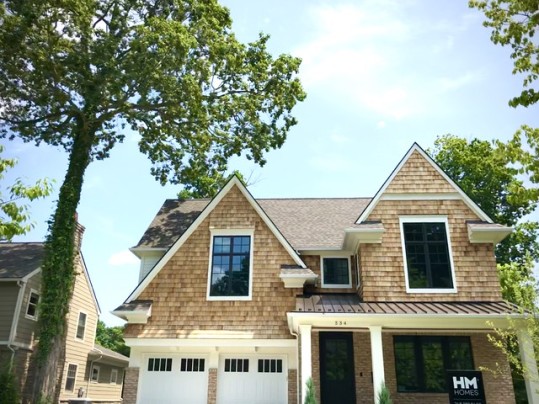According to the Mortgage Bankers Association’s Weekly Applications Survey, demand for loans to buy homes is now 10 percent higher than at the same time last year. That demand remains above year-before levels despite low inventory and rising prices is further evidence that low interest rates continue to help home buyers handle today’s market challenges. Joel Kan, MBA’s associate vice president of economic and industry forecasting, says the trend should continue. “Mortgage applications were mostly unchanged, with purchase activity rising 2 percent and refinances decreasing less than 1 percent,” Kan said, of last week’s results. “Purchase applications continued to run at a stronger pace than last year, finishing a robust 10 percent higher than a year ago. Considering how much lower rates are compared to the end of 2018, purchase applications should continue showing solid year-over-year gains.” Also in the report, average mortgage rates increased across all loan categories, including 30-year fixed-rate loans with both conforming and jumbo balances, loans backed by the FHA, and 15-year fixed-rate loans. The MBA’s weekly survey has been conducted since 1990 and covers 75 percent of all retail residential mortgage applications. More here.
Archive for October 2019
Pending Sales Rise As Purchase Power Grows
Pending home sales increased for the second consecutive month, according to new numbers from the National Association of Realtors. Their Pending Home Sales Index – which measures the number of contracts to buy homes signed each month – saw a 1.5 percent improvement over the month before. Signed contracts are now 3.9 percent higher than last year at the same time. Lawrence Yun, NAR’s chief economist, says historically low mortgage rates are the main factor driving sales right now. “Even though home prices are rising faster than income, national buying power has increased by 6 percent because of better interest rates,” Yun said. “Furthermore, we’ve seen increased foot traffic as more buyers are evidently eager searching to become homeowners.” But while low mortgage rates are helping to offset price increases, affordability levels are largely dependent on inventory. And Yun says more new home construction is the answer to balancing housing supply with the growing demand for homes. As the number of available homes for sale rises, price increases will slow and home buyers will have more options to choose from. More here.
Buyers Need To Be Realistic About Renovations
Considering the popularity of home renovation shows, it’s easy to see why home buyers might be tempted to buy a fixer upper. After all, on TV, renovating a house can be budget-friendly, quick, and even fun. But prospective home buyers, who think they may want to look for a house that needs some work, need to first be realistic. Not everyone has the skills or time to take on a renovation themselves and hiring a contractor can get expensive. Not to mention, all the little details reality TV shows edit out that can cause stress and frustration for an inexperienced do-it-yourselfer. So before you buy a project, be sure you have a good idea of how much work the house will need, how much you’ll be able to do yourself, how much it’ll cost to hire contractors, and what the time frame will be. While a fixer-upper can be a good option for some buyers, it’s not for everyone. Being realistic about whether or not it’ll work for you can help you avoid taking on something that ends up costing you more time, money, and energy than originally anticipated.
What Buyers Should Know About Appraisals
Typically, if you’re buying a house, you’ll be required to have it appraised before your loan closes. Part of the reason for this is to ensure you’re paying a fair price for the property. Another is to protect your lender’s investment – since they’re going to be assuming most of the risk. Either way, it’s a good idea to have a third-party, unbiased, professional assessment of the property. Appraisal Institute president, Stephen S. Wagner MAI, SRA, AI-GRS, certainly thinks so. He says it’s important that anyone getting an appraisal know the purpose of having one. “When hiring a valuation professional, clients should first understand the role of an appraiser,” Wagner said. “The appraiser’s role is to provide objective, impartial, and unbiased opinions about the value of real property – helping those who own, manage, sell, invest in, and lend money on the security of real estate.” Wagner suggests asking certain questions to make sure your appraiser is highly qualified. For example, asking about an appraiser’s experience, licenses, certification, and clientele can help you avoid any potential issues that could affect the closing of the loan. More here.
New Home Prices Fall To Lowest Level Since 2017
There are several reasons new homes tend to be more expensive than previously owned homes. One is that they’re new. You’re going to pay more for any house that has updated fixtures and features, let alone one where everything in it is brand new. But though new homes generally go for a higher price, new data from the U.S. Census Bureau and the Department of Housing and Urban Development shows they’re currently more affordable than they’ve been in years. In fact, the median price of new homes sold in September was $299,400. That’s 8.8 percent lower than they were last year at this time and the lowest new-home prices have been since February 2017. But while that’s good news for home buyers who want to buy new, it didn’t lead to a significant sales bump. In September, sales of newly built single-family homes were down 0.7 percent, with only the Midwest seeing an increase from the previous month. Still, despite the slight decline, sales are 15.5 percent higher than they were last year. More here.
Rate Spike Drives Mortgage Demand Down
According to the Mortgage Bankers Association’s Weekly Applications Survey, average mortgage rates spiked last week from the week before. And though they remain low, rates increased across all loan categories, including 30-year fixed-rate loans with both conforming and jumbo balances, loans backed by the Federal Housing Administration, and 15-year fixed-rate loans. Naturally, the increase led to a drop in refinance activity, with week-over-week numbers showing a 17 percent decline. Purchase demand was also down, though just 4 percent from one week earlier. Mike Fratantoni, MBA’s senior vice president and chief economist, says interest rates have been volatile lately. “Interest rates continue to be volatile, with Brexit votes and ongoing trade negotiations swinging rates higher or lower on any given day,” Fratantoni said. But while rates have been volatile, they remain low by historical standards. They also continue to be a motivating factor for potential home buyers. In fact, purchase demand, though down from the previous week, remains 6 percent higher than last year at the same time. The MBA’s weekly survey has been conducted since 1990 and covers 75 percent of all retail residential mortgage applications. More here.
Time On Market Increases In September
The supply of available homes for sale is limited. So, when you find one that fits your needs and budget, you generally want to move quickly. After all, there could be other buyers, with similar taste, who get an offer accepted before yours is even on the table. These days, that’s especially true. In many markets, there are fewer homes available for sale than is typical. That means, more competition and less time to deliberate before making a decision to buy. But while that’s true, new numbers from the National Association of Realtors show the end of the summer season has provided a little breathing room to interested buyers. According to the NAR’s existing-home sales report the number of days the typical property remained on the market rose to 32 in September. That’s an improvement from August, though no change from year-before levels. Still, while it’s an improvement, 32 days isn’t all that long. And, considering nearly half of all homes sold in September were on the market for less than a month, prospective home buyers still need to make sure they’re prepared and ready to move when they find a house they like. More here.







